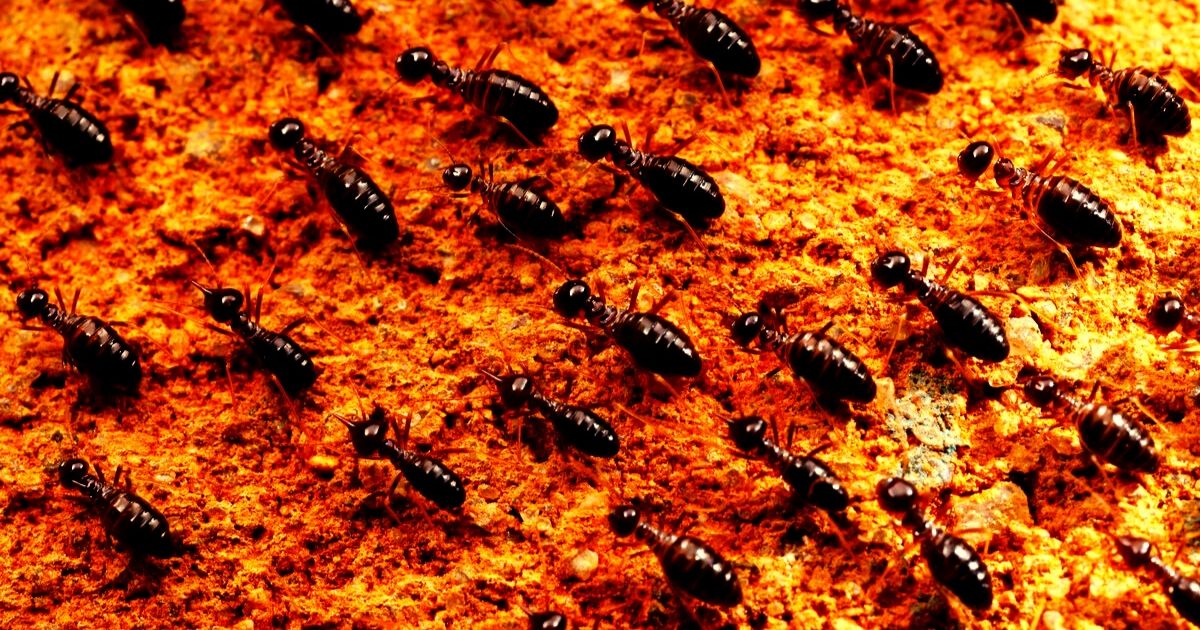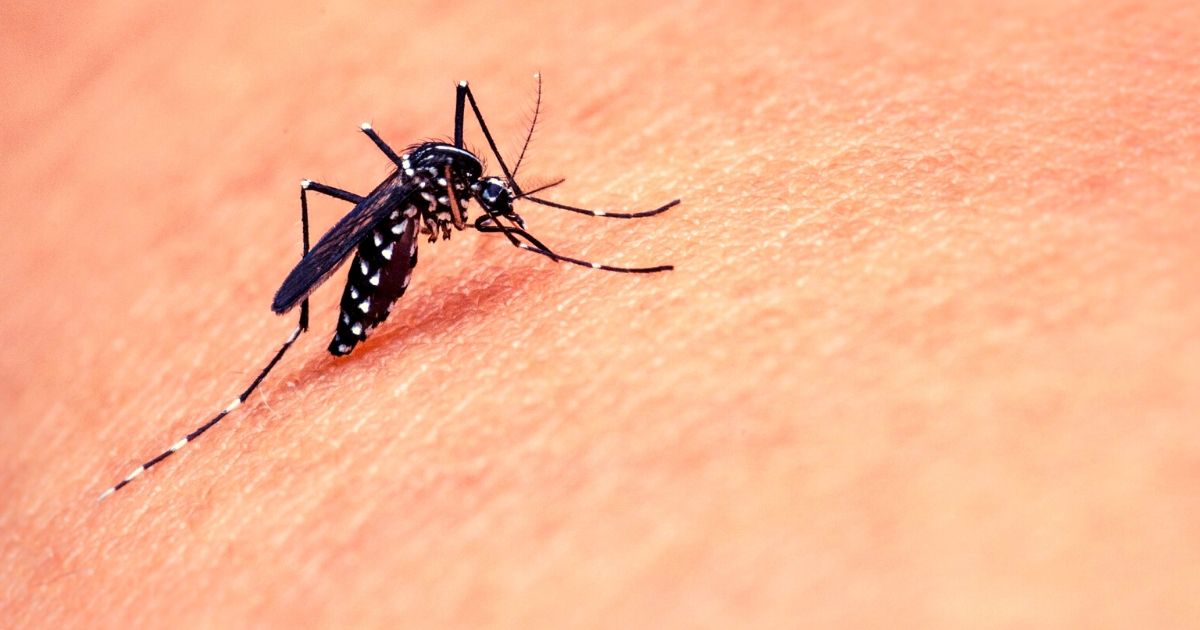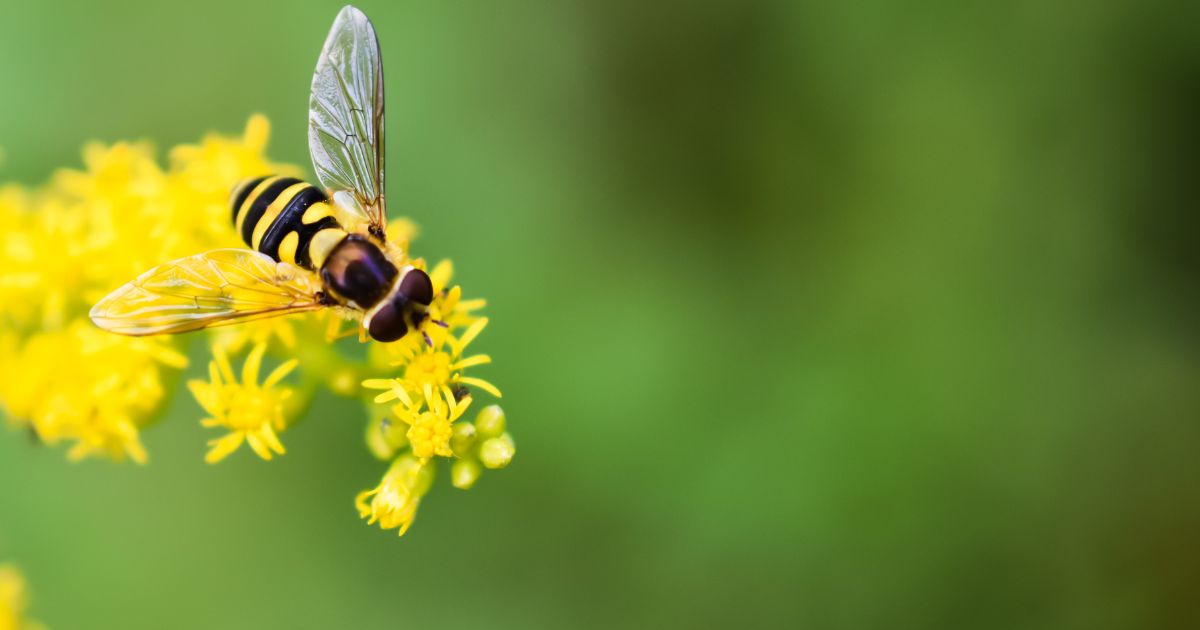The Complete Guide to Hornets Prevention, Treatment, and Control in Singapore
wasps
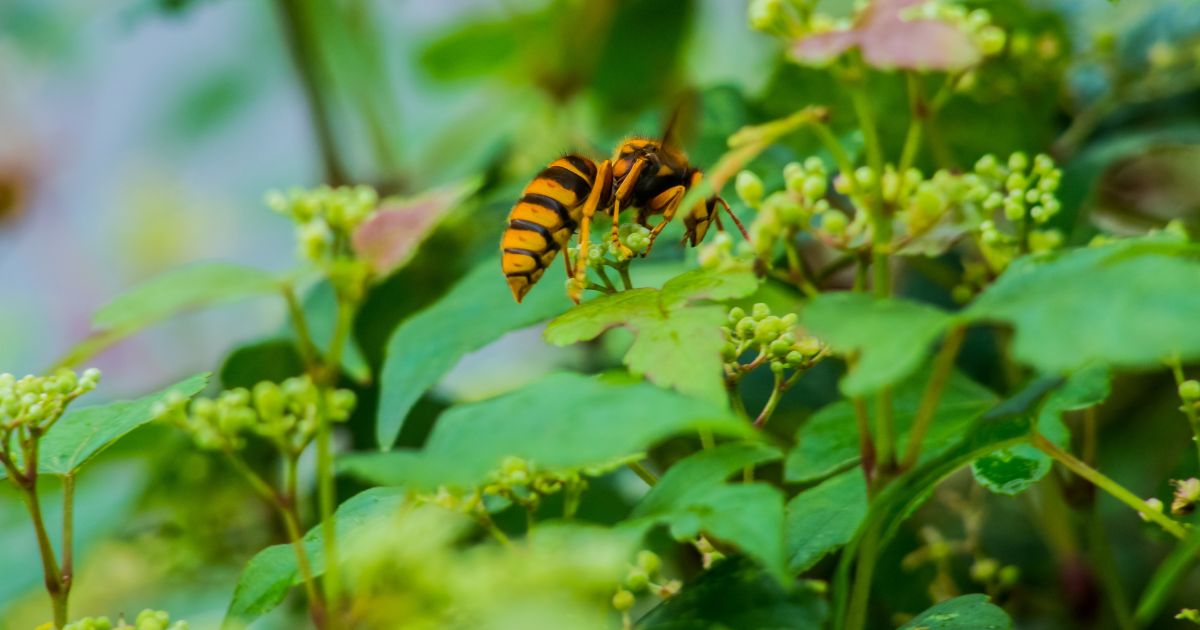
Hornets, a type of flying stinging insect, are found throughout the world, including Singapore. These insects are often confused with bees and wasps as they have a similar colour and shape. Similar to bees and wasps, hornets can build nests near your home and cause distress because of their painful stings. Explore everything you need to know about hornets in Singapore and how to get rid of them.
Table of Contents
- What’s the Difference Between Hornets vs Wasps
- Types of Hornets in Singapore
- Life Cycle and Biology
- Hazards of Hornets – Are They Dangerous?
- Signs of a Hornet Infestation
- How to Prevent and Get Rid of Hornets
- DIY Methods to Prevent Hornets
- When to Hire Professional Hornet Treatment in Singapore?
What’s the Difference Between Hornets vs Wasps?
In short, hornets are a type of wasp, being a specific subgroup within the wasp family. They are black and yellow in colour, but generally larger than other types of wasps. Like other wasps, they build nests and can have painful stings, but they also have some unique characteristics.
Types of Hornets in Singapore
There are several hornet species in Singapore with their unique characteristics. It is important to understand the difference between these species for effective pest control. Some of the hornets commonly found in Singapore include:
1. Lesser Banded Hornet
The Lesser Banded Hornet is small to medium in size (18-30mm) with a vibrant orange and black coloration. Usually, the Lesser Banded Hornet is non-aggressive and won’t attack unless provoked.
2. Greater Banded Hornet
Greater Banded Hornets are the larger cousins (24-30mm) of the Lesser Banded Hornets that also have striking orange and black coloration. They are more territorial and can attack when their nests are disturbed.
3. Yellow-Vented Hornet
Yellow-Vented Hornets are medium to large in size (20-34mm) and have a black coloration with yellow tip. They are less aggressive and will attack only if greatly provoked.
Life Cycle and Biology
Hornets are social insects that live in colonies. They usually have larger colonies and nests than other types of wasps. Hornet nests are common in Singapore and are found in homes and gardens, as well as parks and public areas.
Hornets typically build their nests in sheltered locations, such as tree branches, bushes, roof eaves, or even inside walls. They build their nests from a paper-like material they create by chewing wood and mixing it with their saliva. These nests can become quite extensive, housing thousands of hornets.
Want to find out more about wasp & hornet removal in Singapore?
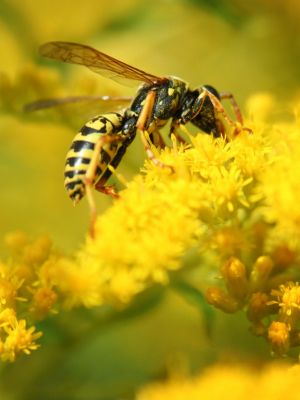
Hazards of Hornets – Are They Dangerous?
Hornets can pose hazards to humans because of their venomous sting. Hornet stings can be painful and, for some individuals, cause allergic reactions. Most people will only experience localized pain, swelling, or redness, but allergic people may suffer from severe reactions.
If you encounter hornets, it is important to stay calm and avoid disturbing them. Usually, they won’t sting unless they feel threatened or provoked.
Signs of a Hornet Infestation
Identifying a hornet infestation early is important for effective pest control. Common signs of a hornet infestation include:
- Hornets frequently flying around your property
- Visible huge nests, especially in sheltered areas
- Large number of dead hornets near your property
Common areas to look out for hornets include:
- Near doors and windows
- In the attic or roof space
- Under roof eaves and in wall gaps
- In trees and bushes in your garden
- Under playground equipment, garden benches or tables
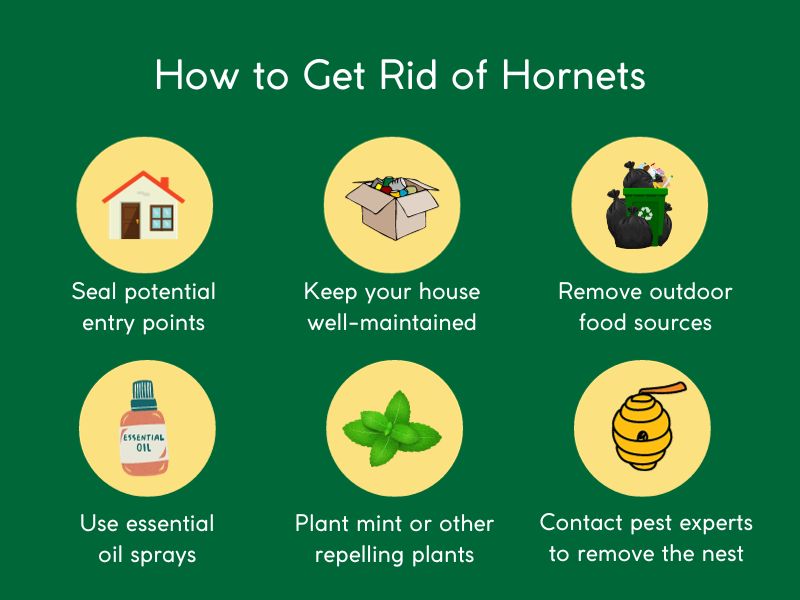
How to Prevent and Get Rid of Hornets
If you suspect a hornet infestation on your property, there are some steps you can take to address the issue.
Seal Entry Points: Prevent hornets from getting inside your home by inspecting it for potential entry points (and sealing them).
Regular Maintenance: Keep your property well-maintained, as hornets are attracted to decaying wood/paper and organic matter that they use for building nests.
Remove Food Sources: Hornets are attracted to food odors so it is important to keep outdoor food and trash bins tightly sealed.
Nest Removal: If you find a hornet nest near your home or in your garden, it’s best to contact a professional pest management company for hornet nest removal. It is not safe to remove hornet nests without proper skills and equipment.
Pro Tip: If you need help with a hornet infestation at your property, contact pest control professionals for safe and effective hornet removal.
DIY Methods to Prevent Hornets
While DIY methods don’t guarantee hornet prevention, they can be effective to some extent. Here are some common natural methods to prevent hornets from your property:
- Using Essential Oils: Some essential oils like peppermint or clove oil have a strong scent that can repel hornets and prevent them from building nests. To prevent hornets, mix a few drops with water and spray them in areas where hornets are active.
- Plant Mint or Other Hornet-Repelling Plants: Mint has a strong scent that can repel hornets and other insects. Planting them in your garden, on your balcony or near your home can also help keep hornets away from your property. Other hornet-repelling plants include wormwood and marigolds.

Pest Problem? Let Us Help.
We offer fast and effective precision treatments to eliminate pests while ensuring a safe environment for your home or business.
When to Hire Professional Hornet Treatment in Singapore?
If you have a hornet infestation, in most cases it is recommended to seek the assistance of a professional pest control service in Singapore. Killem Pest has the knowledge and equipment to handle hornet infestations effectively, safely and quickly.
Author: Soleha Nisaa
Frequently Asked Questions
It is recommended to hire licensed pest control professionals to handle hornet infestations and to follow their advice on preventive measures.
Yes, some birds and certain insects are natural predators and can help control hornet populations. Having a diverse ecosystem in your garden can lead to a balanced hornet population.
Yes, some eco-friendly approaches include using natural repellents and traps designed to catch hornets without harmful chemicals. These methods are less harmful to the environment.
Related Posts
Wasp vs Bee: What’s the Difference?
wasps

Bees and wasps may seem similar and are often mistaken for one another, however these creatures have their unique characteristics. Let’s explore the similarities and differences between these two insects, what individual traits they have, and how you can distinguish between them.
Are Wasps and Bees the Same?
No, wasps and bees are not the same. Although they both belong to the order Hymenoptera and share some similarities, they are different species with their own distinct behaviors, appearances, and ecological roles.

What You Should Know About Wasps
Wasps are predatory insects that come in various species, the most common ones being yellow jackets, hornets, and paper wasps. Here are the key factors to know about wasps:
- Predatory Nature: Wasps feed on other insects, including caterpillars and spiders, making them valuable for pest control in ecosystems.
- Nesting Habits: Wasps build nests from paper-like materials; their nests can be found in trees, shrubs, and even underground.
- Distinctive Appearance: Wasps typically have slender bodies with bright yellow and black markings. They are more slim-bodied than bees.
Want to find out more about wasp & bee removal in Singapore?
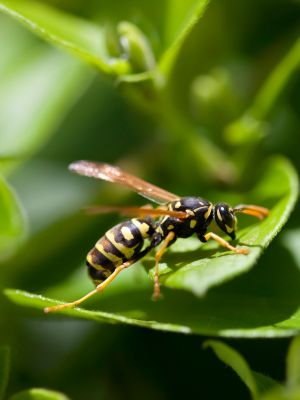
What You Should Know About Bees
Bees, on the other hand, are known for their essential role in pollination and honey production. Here’s what you should know about bees:
- Pollinators: Bees are crucial pollinators that help fertilize plants, ensuring the production of fruits, vegetables, and flowers.
- Honey Production: Honey bees are famous honey-makers – they collect nectar from flowers, transform it into honey, and store it in their hives.
- Furry Bodies: Unlike wasps, bees have hairy bodies that help pollen collection and transportation from one flower to another.
How are Wasps and Bees Similar?
Although wasps and bees are different insects, they share some similarities:
- Both wasps and bees can sting, but only wasps and some types of bees can sting multiple times, while honeybees die after the sting.
- Both wasps and bees contribute to the world’s ecology, but in different ways.
- Bees and wasps are both nectar-feeding insects.
- Both bees and wasps are most active during the warmer months of the year when flowers are in bloom.
Pro Tip: Since wasps and bees both play a vital role in our ecosystem, it’s important to consult pest control professionals when dealing with a nest problem, for safe and sustainable removal.
How Do You Tell the Difference Between a Bee and a Wasp?
Here are some key characteristics that can help you distinguish between bees and wasps:
- Body Size: On average, bees are smaller – up to 15mm in length, while wasps can be up to 20 mm in length.
- Body Shape: Bees generally have rounder and furrier bodies, while wasps tend to have slimmer bodies and are less hairy.
- Coloration: Bees are often covered in brown, black, or yellowish fuzz, whereas wasps typically have distinct yellow and black markings or may be brown or reddish.
- Behavior: Bees are less aggressive compared to wasps. Bees are typically focused on pollination and are less likely to sting unless provoked, while wasps can be more aggressive and may sting in defense or when they feel threatened.

Unwanted Guests? We're Here to Help.
We offer safe and efficient wasp removal and bee relocation services, ensuring the safety of your home or business while caring for the environment.
Recognizing these differences can help you better understand and coexist with these valuable creatures in our ecosystems. Remember to exercise caution and respect when encountering either of them, as both play vital roles in our world and can also sting when feeling threatened.
Author: Soleha Nisaa
Frequently Asked Questions
No, a wasp is not a bee. Wasps and bees are two different insects, although they share some similarities due to their common classification.
Wasps and bees are related within the same order, but are distinct insects with different appearances, behaviors, diets, and ecological roles. While hornets are a type of wasp, they also have distinct characteristics, including their larger size, distinct black and white or reddish-brown coloration, and nest-building habits.
Wasps have minimal or no hair on their bodies. Unlike bees, which have fuzzy bodies covered in hair. This lack of hair is one of the key distinguishing features between the two insects.
Yes, wasps are generally considered to be more aggressive than bees. Wasps can be more territorial and aggressive in defending their nests, and are more likely to sting if they perceive a threat. Bees, on the other hand, are more likely to sting when they believe their hive is in danger.
No, not all bees make honey. Honey bees are the primary species known for honey production. Other bee species may not produce honey at all.
To coexist peacefully, avoid disturbing their nests, wear protective clothing if necessary, and keep food and sweet beverages covered during outdoor activities. If dealing with a nest problem, consider consulting a pest control professional like Killem Pest for safe and sustainable removal.
Related Posts
The Complete Guide to Wasp Prevention, Treatment and Control in Singapore
wasps
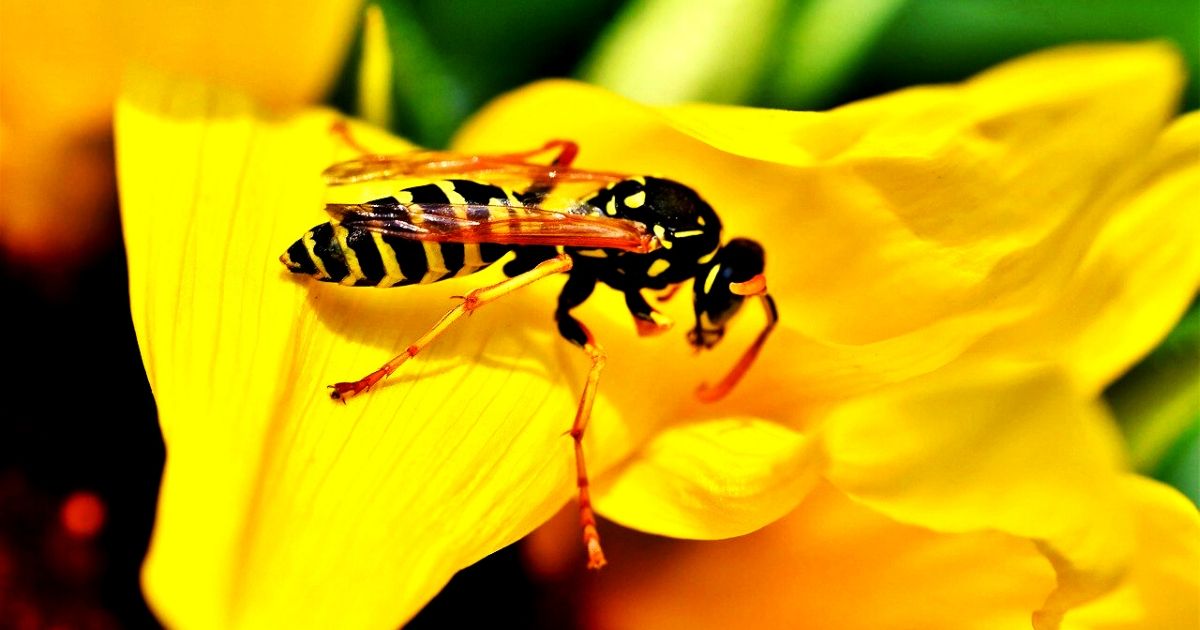
Wasps, a group of flying insects in the order of Hymenoptera, are often confused with bees because of their similar shape. Both can build nests in trees, attics, balconies and at the corner of ceilings.
Wasps and hornets are from the same family, Vespidae. They are beneficial insects and play essential roles in the ecosystem. They help in pollination and prey on insect pests. Without wasps, we would be dealing with more insects, pests and spiders. Nevertheless, the presence of wasps may cause stress and disturbance to humans because of their painful and dangerous stings.
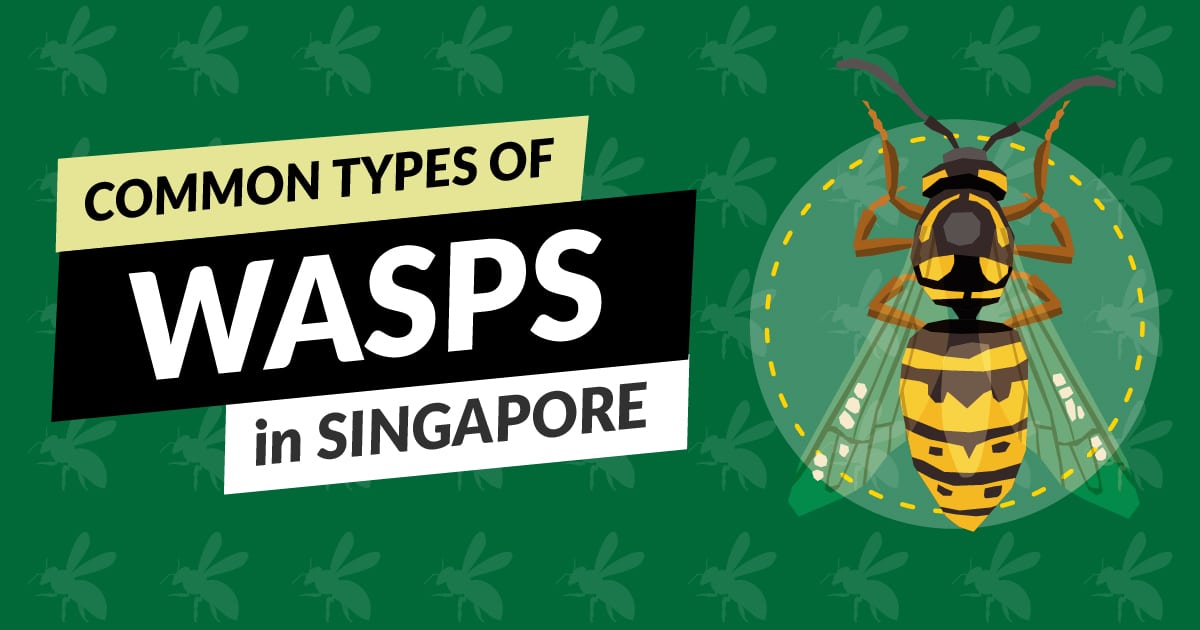
Types of Wasps in Singapore
Wasps can be distinguished between social wasps and solitary wasps. Social wasps share one nest, while solitary wasps nest alone. Hornets, yellow jackets, and paper wasps are examples of social wasps. On the other hand, thread-waisted wasps and mud daubers are characterized as solitary wasps.
Social wasps:
Paper wasps
Paper wasps are said to be the most common type of wasp in Singapore. Paper wasps have reddish-brown to black colour bodies with yellow rings around their abdomen. They are also called “umbrella wasps” because their nests resemble an upside-down umbrella supported by a single stalk.
Yellowjackets
Yellowjackets look quite similar to paper wasps. However, paper wasps have long and slender legs. The most common yellowjackets have bright yellow bodies with black lines, spots and triangles on their abdomen. Their body size is around 0.9 to 1.5cm.
Unlike paper wasps, yellowjackets use wood fibre to construct their nests. Yellowjackets may build nests in wall voids and attics, but they rarely cause structural damage to premises. Besides, they also build nests below the ground (not active rodent burrows), hollow logs, timbers or trees.
Hornets
People most often refer to yellowjackets as hornets. However, some hornets are much larger (can be up to 5cm) than yellowjackets. They can construct round or pear-shaped paper nests up to 90cm long. An entrance hole is always situated near the bottom of the nest. Hornet nests are most often built above ground, in high trees. However, they may attach their nests to the eaves of the buildings.
Solitary wasps:
Mud daubers
Mud daubers have longer and slender waists compared to most of the other wasps. Their body sizes range from 2 to 2.5cm. Nests of mud daubers are much smaller. They build mud tubes under buildings, roofs or attics.
Thread-waisted wasps
Thread-waisted wasps have incredibly narrow waists with a red or orange band between the waist and the abdomen. They also have long and skinny legs. The body size can be longer than 2.5cm, bigger than mud daubers. Thread-waisted wasps are ground nesters. They construct nests and seal them temporarily just before going out and searching for food.
Want to find out more about wasp removal in Singapore?
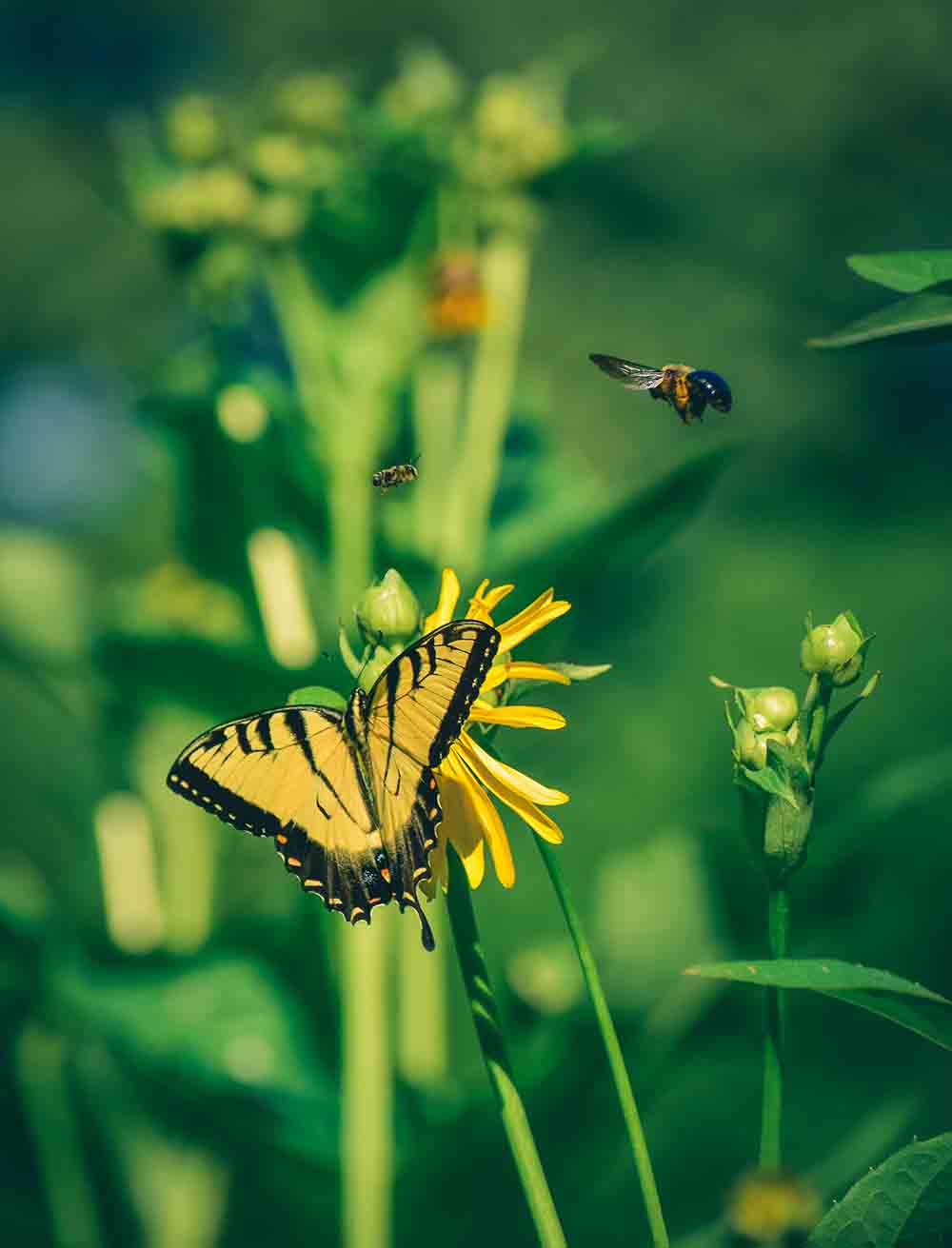
Life Cycle and Biology
A wasp nest is generally started from a solitary queen/female wasp. She will first build a small nest and raise the first generation on her own.
Social wasps
Social wasps have a caste system in their societies. One caste can have one or several queens. The workers are sterile females. A few drones (males) can also be found.
A mature paper wasp nest rarely has more than 200 cells and the nest usually contains 20-30 adults. Most social wasps have annual nests (survive a year). Social wasp workers typically have a lifespan of 12 to 22 days, while the queen usually can live up to a year.
Solitary wasps
Solitary wasps are also predators. Adult wasps feed on nectar and prey on insects or spiders to feed their young, just like social wasps. Different species of solitary wasps attack different types of insects. They sting, paralyze, drag or pick prey back to their nest. The larvae of the solitary wasp will then feed on the immobilized prey for their development and growth.
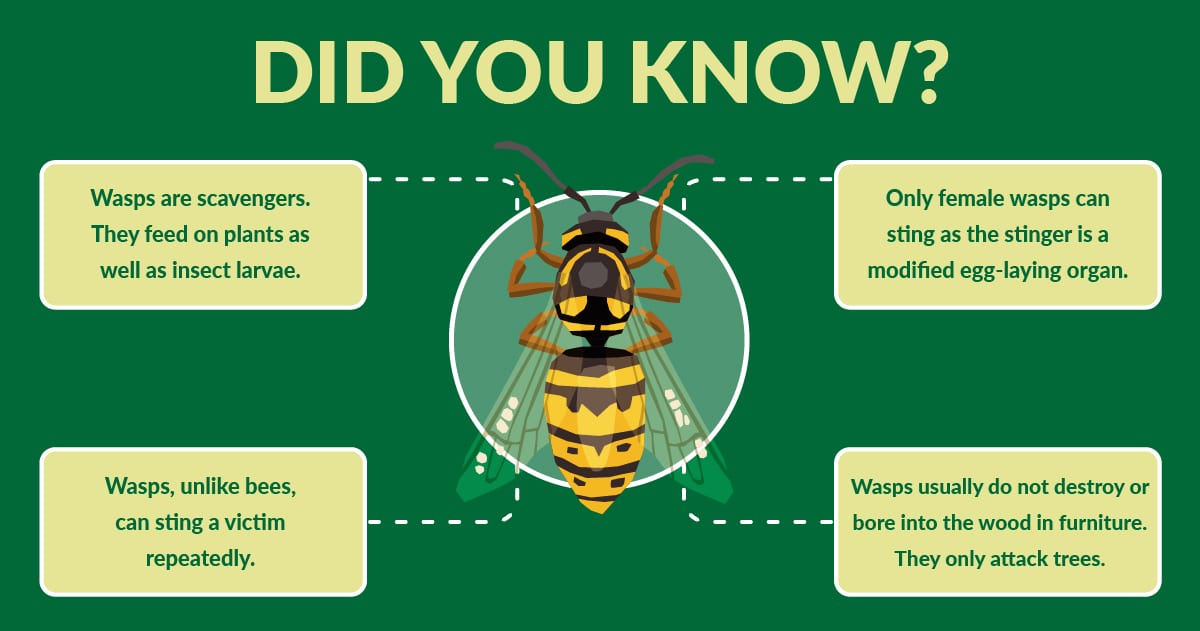
Hazards of Wasps
The ability of wasps to sting is the primary reason that people are worried. Wasps sting and inject venom from the rear part of their abdomen. Social wasps will vigorously attack humans when their nest is disturbed.
Nonetheless, they rarely sting away from their nest unless they are trapped or pressed against human skin. On the other hand, solitary wasps rarely sting unless threatened. The sting from solitary wasps usually causes a less severe reaction to humans than social wasps.
Wasp stings result in pain. Often, wasp stings are more painful than the sting of bees. The stings from wasps are usually not life-threatening but can last for a longer period. Allergic reactions may occur in some people. In severe cases, they may suffer an anaphylactic (hypersensitive) reaction if they are stung by the wasps. However, most deaths from wasp stings are because by allergic reactions to venom protein and enzymes from the wasps.
After being stung by a wasp, most people will only experience minor pain and swelling on the skin, while there are still many other symptoms that can be resulted from the sting of a wasp:
- Pain
- Redness
- Swelling
- Itching
- Flushing
Victims should seek medical care immediately if severe allergic reactions start to develop. Symptoms in more severe cases can be:
- Widespread rash
- Anaphylaxis
- Difficulty breathing
- Rapid pulse
- Low blood pressure
- Shock/respiratory distress
The best thing to do is to run to a protected area to prevent social wasps from stinging continuously and avoid danger.
Secondary effects from wasp stings
There is another problem resulting from getting stung by a wasp. Many people panic if there is a wasp around. Secondary hazards can occur if a person sees a wasp and suddenly starts running without noticing their surroundings. For example, this may happen while crossing a road.
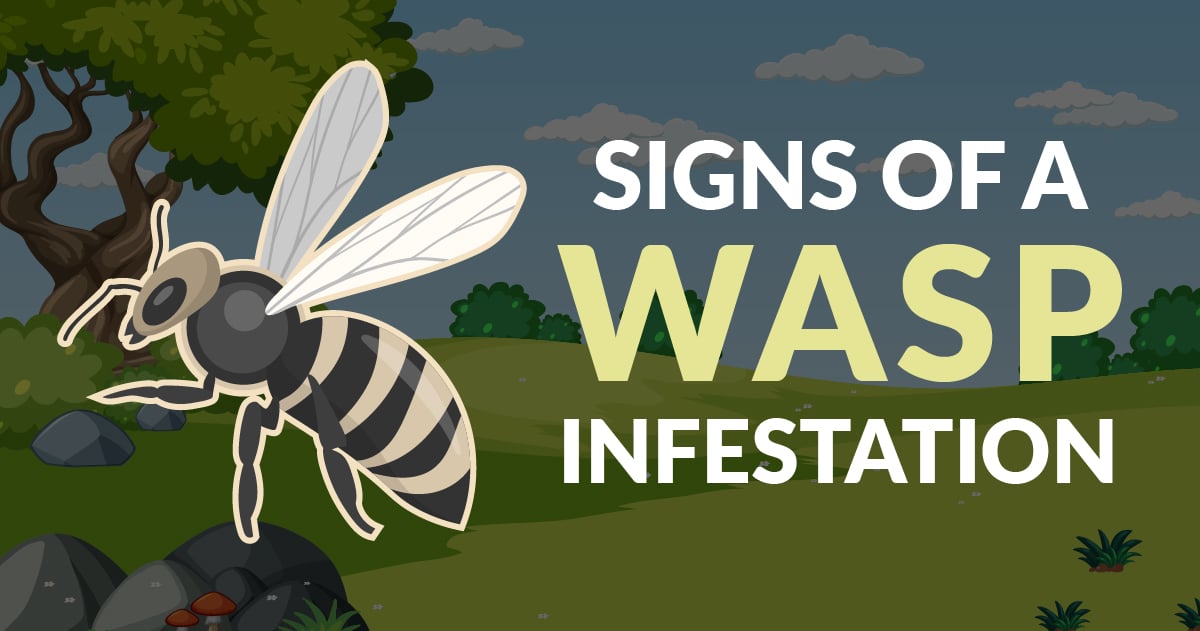
Signs of a Wasp Infestation
1. Sighting of wasps
This is quite an obvious sign that can tell you if a wasp nest is somewhere near you. You might need to follow and trace wasp nests if you wasps flying around your premises. What you can do is follow their flight path and check for the nest location.
2. Buzzing wasps
Buzzing happens especially when social wasps are around. This is because of their large number. The buzzing sound may give you a cue to locate their nest.
3. Sighting of wasp nests
You may do a thorough check around your house after noticing the first and second signs. Wasp nests can be found in trees, inside lofts, edges of roofs, in the corner of a quiet room, or even inside a wardrobe.

Tips to Prevent and Get Rid of Wasps
How to prevent wasps? It is almost impossible to eliminate wasps from us entirely as they are part of our ecosystem. Nonetheless, we can try to reduce their access to our living environment and make it less suitable for them to breed.
1. Eliminate new nests before they become a threat
It is usually safe to destroy a wasp nest when it is still in the earliest stage of development. However, if you are worried about the possible hazards, you may call a pest management professional to handle them.
2. Seal any openings that can be potential entry points for wasps
You can inspect and check around your house’s exterior. Use durable materials like caulk-based silicone, metal screen or similar sealant to repair or seal any openings, cracks or gaps that might harbour a wasp colony.
3. Reduce clutter
It is essential to reduce clutter in and outside of the house. Unused items such as lawn equipment, appliances or unwanted receptacles can attract and provide shelter for wasps to build their nest, especially when food and flowers are around.
4. Do not leave any food outside
After enjoying your dinner or barbecue in the backyard, always make sure to clean up immediately.
5. Make sure garbage bins are covered completely
Garbage bins can be one of the popular nesting sites for wasps because of the moisture and food. Make sure the bin lids are clamped down securely and inspect for any crack or hole on the surface of the bins.
6. Avoid overripe fruit in your garden area
If you are planting fruit trees in your garden, make sure to check to avoid overripe fruit frequently, as these attract wasps. You may also seal the fruit in a plastic bag or container to not attract wasps to come over.
Pro Tip: Because of the hazards and challenges, it's better to leave wasp management to pest control professionals.
DIY Methods to Get Rid of Wasps
There are a few DIY methods that might help to deter wasps from nesting around your house. These methods make use of the smell released from natural oil blends or plants.
1. Use of essential oils
Research has found that a combination of lemongrass, clove and geranium essential oils can successfully repel wasps. Mix several drops and apply the oils on potential nesting sites such as edges, roofs, cracks, and crevices. Furthermore, you may also target those areas that were previously occupied by a wasp nest.
2. Place/plant wasp-repelling plants around your house
You may plant some wasp-repelling plants around your house instead of those flowering plants that may attract wasps from coming in. Mint, eucalyptus, citronella, marigold, basil and geranium are some examples of plants that wasps find distasteful. You may also cultivate those plants indoors if you spotted wasps in the area before.

Pest Problem? Let Us Help.
We offer fast and effective precision treatments to eliminate pests while ensuring a safe environment for your home or business.
Professional Wasp Elimination Treatment in Singapore
Wasp management is best left for professionals because of its hazards and challenges in applying chemicals to the wasp nest. Pest management professionals are always equipped with the proper PPE (personal protective equipment) when dealing with bee or wasp nests. The PPE prevents them from getting stung.
Our trained pest management professionals use an effective chemical delivery system to reach wasp nests with an aerosol generator. The chemical or insecticide acts on the entire wasp colony and the nest is then removed from the infested area.
If you have wasp issues in your house or premises, please do not hesitate to contact Killem’s team. Our trained pest management professionals can help you get rid of your worries and make you feel safe again.
Frequently Asked Questions
It is not recommended to try to get rid of wasps by yourself. Wasp removal requires a lot of caution and is therefore best left to pest control professionals.
We can usually perform a wasp removal service within 2 working days.
In most cases, our pest professionals require up to an hour to perform the wasp treatment.

